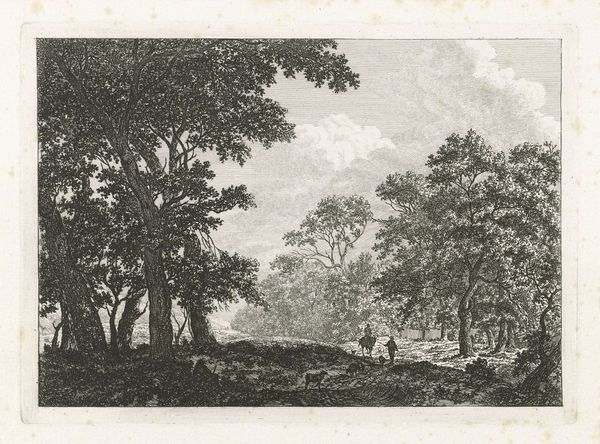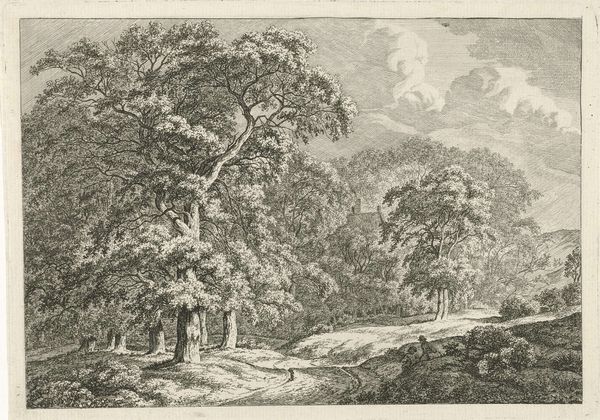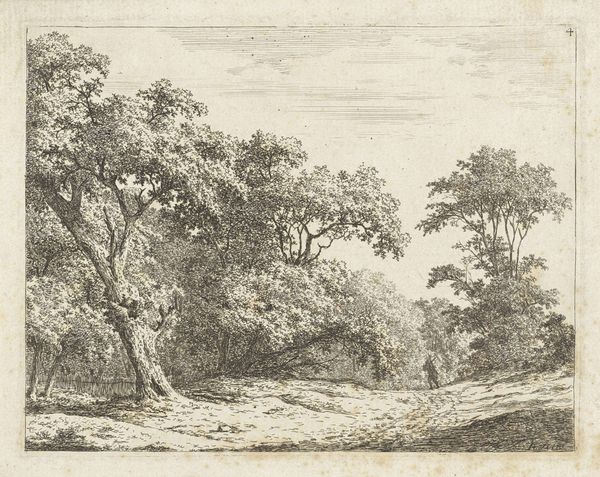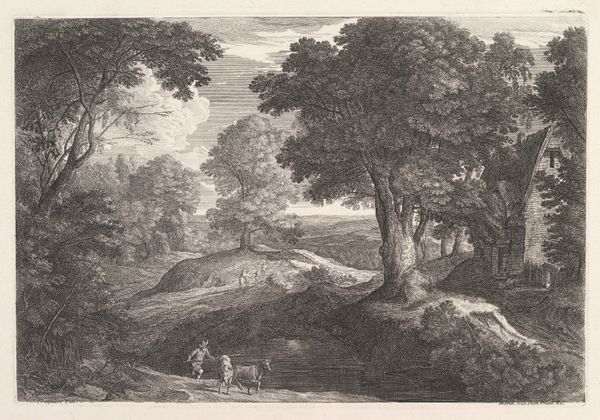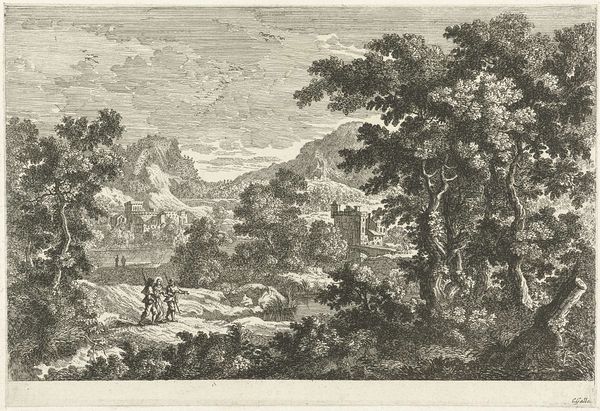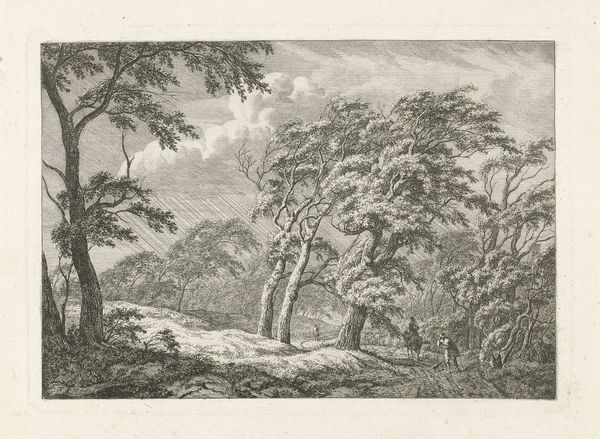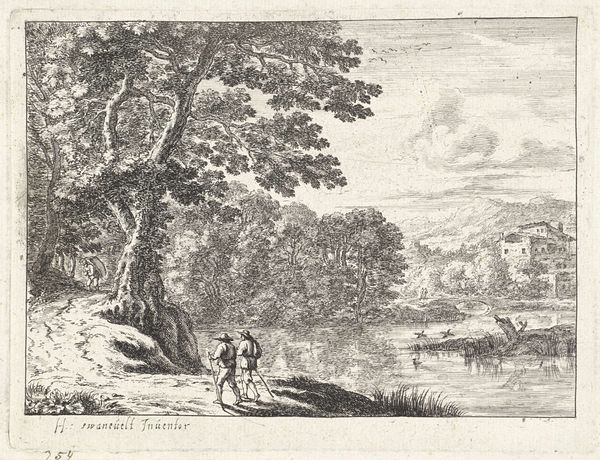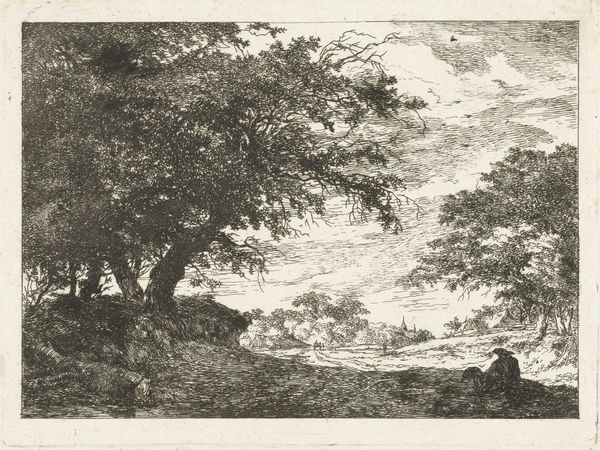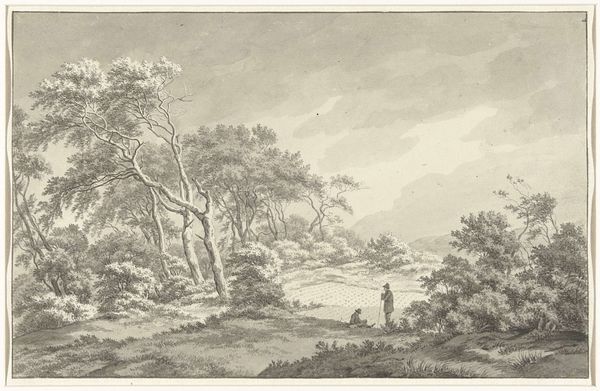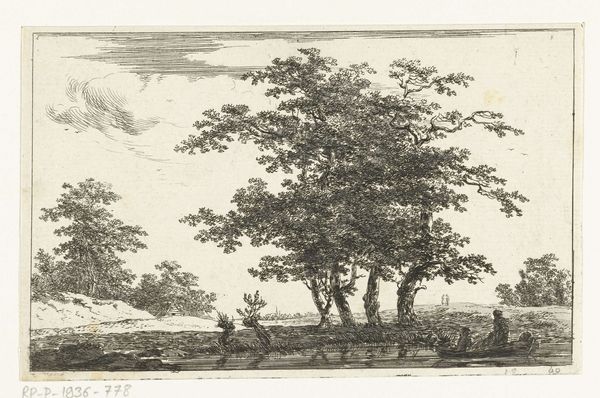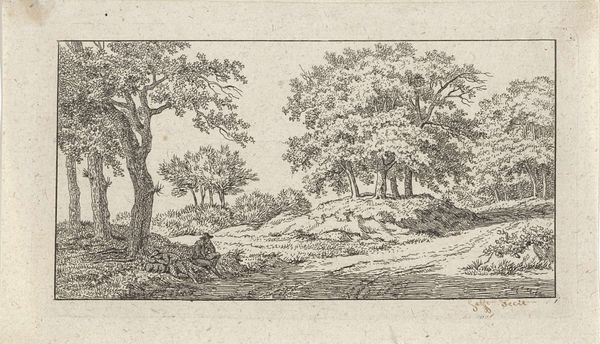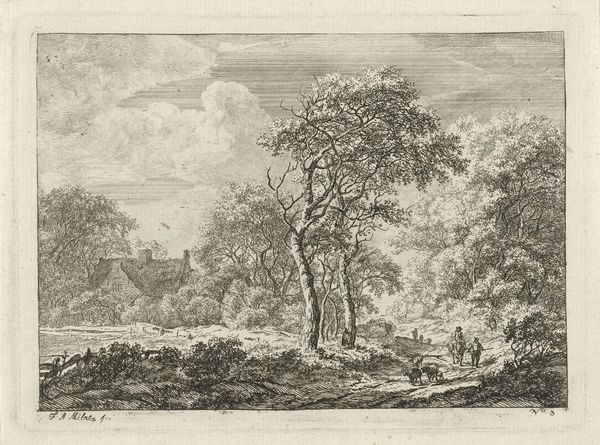
drawing, etching
#
drawing
#
etching
#
landscape
#
romanticism
#
realism
Dimensions: height 174 mm, width 244 mm
Copyright: Rijks Museum: Open Domain
Editor: Here we have "Landscape with two figures beside the road", an etching by Franciscus Andreas Milatz, created sometime between 1784 and 1808. It's quite intricate, all these fine lines building up the scene... the trees dominate everything, looming over the tiny figures. What strikes you about the work? Curator: The interesting thing here is the use of etching to depict something ostensibly natural. This process involves treating metal with acid to create the image, so immediately there’s a layer of human intervention, a mediation between nature and representation. How does that impact our understanding of landscape at the turn of the 19th century? Editor: That’s a great point. So it’s not just the subject matter, but the means of creating the image itself that’s significant? It's making me consider labor here, almost mass-production... Curator: Precisely! And consider the consumption of such images. Who would have purchased and viewed this etching? How does the act of etching – the specific labor involved in its creation and reproduction – influence the social value of the landscape itself? Are we romanticizing the labour? Editor: Hmmm. It probably wasn’t for the farmers toiling on the land, was it? This kind of idealized scene feels aimed at someone who consumes images of landscape, maybe as a marker of status or taste. It all comes back to the means of production and who has access to that. Curator: Indeed. By analyzing the materiality and means of production, we’re unpacking the complex social and economic forces that shaped both the creation and reception of this landscape. Editor: This makes me see this serene image completely differently now, less as a tranquil scene, more as a crafted product reflecting societal values. Thank you! Curator: A pleasure! I think acknowledging labor enriches how we perceive a piece, in this case, highlighting that a seemingly untouched scene, in fact, is shaped by material means, consumption patterns and social values.
Comments
No comments
Be the first to comment and join the conversation on the ultimate creative platform.
